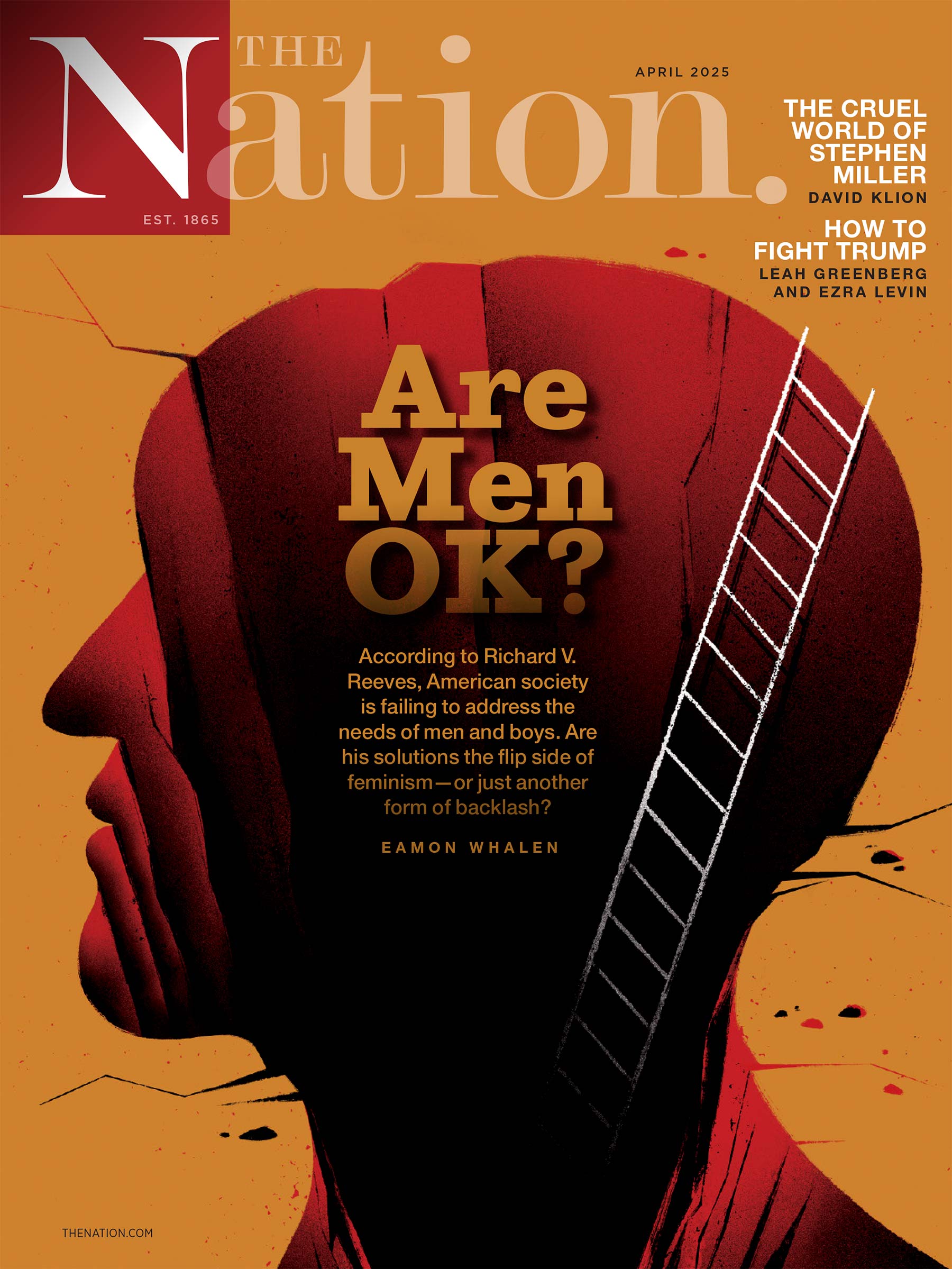Jitters are not among the clinical symptoms of anthrax. The spore-borne illness that has so far killed tabloid photo editor Robert Stevens and contaminated dozens of people in media and government is usually treatable with antibiotics and perhaps a follow-up vaccine. But the arrival of those spores threatens to unbalance an already anxious nation. As I write, the story changes hourly. On Tuesday, the anthrax is described as potent–laboratory-grade; on Wednesday it’s declared “naturally occurring.” Spores are reported in Congressional ventilation ducts; then the report is declared false. The House closes for a five-day sweep, while Tom Daschle–thirty-one of whose staff members are found to have spores in their nasal passages–says the Senate will remain open. Governor Pataki’s New York City office tests positive for spores; an infant who visited ABC News contracted the infection. The scale is nothing like the September 11 attacks; but just as the box-cutters made it clear that mass destruction requires neither nuclear weapons nor even machine guns, so the spread of anthrax through envelopes turns upside down James Bond images of nerve gas and death rays.
The people sending those envelopes know what they’re doing: infecting first the media, the retinal nerve of democratic perception, before turning to the pols. A nervous press means a nervous public. What is striking about the initial round of white-powder letters is the sophisticated consideration of media dynamics and demographics: the ultratabloid Sun, the ultrarespectable New York Times; old-media Tom Brokaw, dot-com Microsoft. (Some militia-watchers theorize that the anthrax is coming from McVeigh type scaremongers piggybacking the current crisis. But the circumstantial evidence–particularly the fact that one of the first letters went to the Times‘s Middle East and terrorism specialist, Judith Miller–does suggest Al Qaeda adherents, as does the apparent purity of the strain.)
A few things about the anthrax scare need to be said. First, at its current scale–with doctors nationwide now on the lookout for anthrax symptoms–it is indeed a scare rather than a medical nightmare. Second, should the number of cases or the distribution of spores grow more widespread, the greatest danger comes not from the easily treatable disease but from the long degradation of the nation’s public-health infrastructure. For the past twenty years, Republicans and Democrats alike have regarded public health, and any excess capacity in the healthcare system, as an insult to the free market. In large cities, public hospitals have been closed and privatized and community clinics converted to bottom-line-driven HMOs. Understaffed and underfunded city and state health departments track illness with out-of-date computer software; 10 percent of local health departments don’t even have e-mail. Last year, the federal government spent less than $50 million on improving state and local public health infrastructure–a piddling amount when spread among fifty states.
It’s a problem not just of funding but of management philosophy–one that has left the public less protected from epidemics and terrorism than a decade ago. “One of the responses to financial pressures has been to cut out excess capacity,” Tara O’Toole, MD, of the Johns Hopkins Center for Civilian Biodefense Studies testified in July before the Senate’s internal security subcommittee. “The entire hospital in virtually every town in this country, whether it’s the Johns Hopkins Medical Center or a small rural hospital, is basically now functioning on ‘just in time’ models. The number of nurses that are going to be working at Hopkins tomorrow is based upon the number of patients in the hospital today, likewise for supplies, for antibiotics, for what have you…. Few, if any, hospitals in America today could handle a hundred patients suddenly demanding care.” Simply put, today’s public health system has no surge capacity. After a devastating fire in a high-rise building, the Maryland secretary of health conducted a study of hospitals’ preparation for a large number of people needing ventilators, a likely scenario in a biological attack. Though Maryland is home to a major city, sprawling suburbs and two major medical centers, officials found only about 100 ventilators statewide.
The political culture has left public health so far behind that official Washington seems to have taken little notice of the near-complete absence of the nation’s top medical officials from the media as the anthrax cases spread. Remember Surgeon General David Satcher? A quick Nexis search reveals only two mentions of Satcher in the scare’s first five days. Remember the Centers for Disease Control? Doctors nationwide are complaining that the CDC and its director, Dr. Jeffrey Koplan, are offering only scant information about the detection and treatment protocols for anthrax. For days, the public’s only information came from Attorney General John Ashcroft and HHS Secretary Tommy Thompson–and from Thompson it was often misinformation that infuriated medical professionals. The Bush Administration seems to be applying the same extreme strictures on medical information that it’s enforcing at the Pentagon. Researcers say off the record that everyone at CDC is terrified of talking. Johns Hopkins’s Tara O’Toole puts it this way: “It is normal in a criminal investigation to withhold information. But this is not a normal situation. The public is panicking. People need information desperately. If there is anything we have learned from past disasters, it is that people do better with more information, even if it is disturbing information.”
Biological warfare is not a new threat here. As historian Elizabeth Fenn recounts in her new book Pox Americana, George Washington worried that the British would wound his soldiers with arrowheads dipped in smallpox-infected sores, and in 1763 British General Jeffery Amherst approved distribution of smallpox-infected blankets to Indians. Jane’s Intelligence Review reports 110 alleged cases of biological agents in warfare in this century. What makes today’s anthrax cases distinctly threatening is not the sadism and criminality of the attacks. It is the speed with which panic can spread through a mass medium that is itself the center of attack–amid a political culture that for twenty years has refused to regard public health as a bottom-line indicator of national security.


